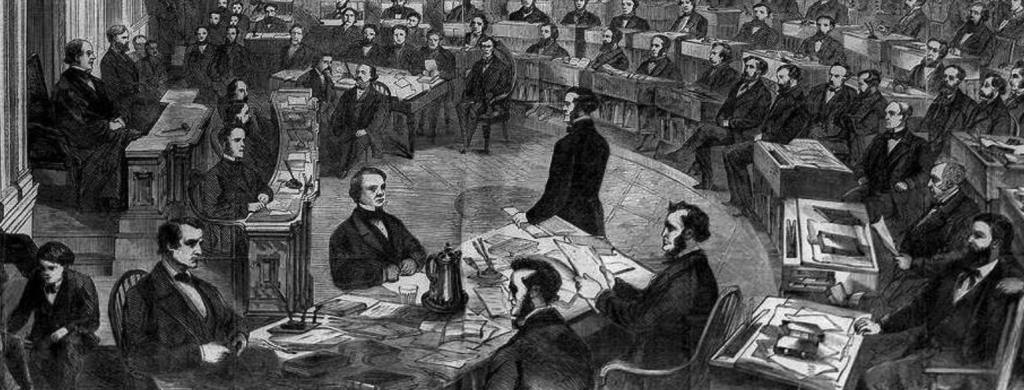Only two times in the history of the United States has a president been impeached. One is still relatively fresh in the public’s mind – when 20 years ago, in 1998, President Bill Clinton was impeached. The other was 150 years ago, all the way back in 1868, when President Andrew Johnson, the successor to Abraham Lincoln, was impeached by the House of Representatives for “high crimes and misdemeanors.” Like the proceedings surrounding President Clinton, the public was fascinated and the media spotlight was squarely focused on Washington, D.C. during Johnson’s impeachment.

Photo Credit: Wikipedia
Johnson was thrust into the presidency in April 1865 after Lincoln’s assassination. By the time the House of Representatives voted to impeach him on February 24, 1868, President Johnson was seen as a divisive national leader. Johnson hailed from Tennessee but had remained loyal to the Union during the Civil War, which had ended less than three years earlier. During the war, he called Southerners “traitors,” but once he became president he embarked on a route of conciliation and set out to heal the nation’s deep wounds.

Photo Credit: Wikipedia
Johnson’s leniency toward white Southerners and the move away from his former hardline policies angered many Americans in the North and members of Congress. Johnson also furthered the animosity by vetoing civil rights legislation and financial support for former slaves. The final straw came when Johnson fired Secretary of War Edwin Stanton after the two clashed on a number of issues. This directly defied the Tenure of Office Act that was passed in 1867. Congress, finally fed up with what they perceived to be a long list of abuses by Johnson, decided to impeach the president.

Photo Credit: Wikipedia
After impeachment was approved by the House, the Senate was in charge of conducting a trial to determine whether President Johnson should remain in office. Newspapers followed every detail of the trial when it began in March 1868. Crowds attempted to get into the Senate every day of the trial, but only a lucky few were permitted to watch the proceedings.

Photo Credit: Facebook, Whitfield-Murray Historical Society
A group known as the Radical Republicans were the most adamant about having the president removed from office, and senators argued passionately about Johnson’s many discretions. The main issue with Johnson was that, in their view, he had used his power to prevent Congress from aiding the 4 million former slaves who were freed at the end of the Civil War. The Radical Republicans believed that President Johnson had a deep hatred for black people, and that his removal was necessary to set the United States on the right path to unification.

Photo Credit: Facebook, David C. Perry
After an 11-week trial that Americans followed daily, Johnson’s judgment day arrived. There were 54 Senators at the time of Johnson’s impeachment. To remove the President from office, 36 Senators needed to vote “Guilty.” On May 16, 1868, a total of 35 senators voted guilty, one short of the 36 required to remove Johnson from office. President Johnson was free to serve out his term. For the remainder of his presidency, Johnson continued to veto Reconstruction bills aimed at helping black Americans, even though Congress overrode his vetoes.
Want more? Check out the articles below:
https://didyouknowfacts.com/totally-disturbing-story-president-tafts-pistol-killed-10-men/
https://didyouknowfacts.com/anti-war-activists-broke-fbi/






